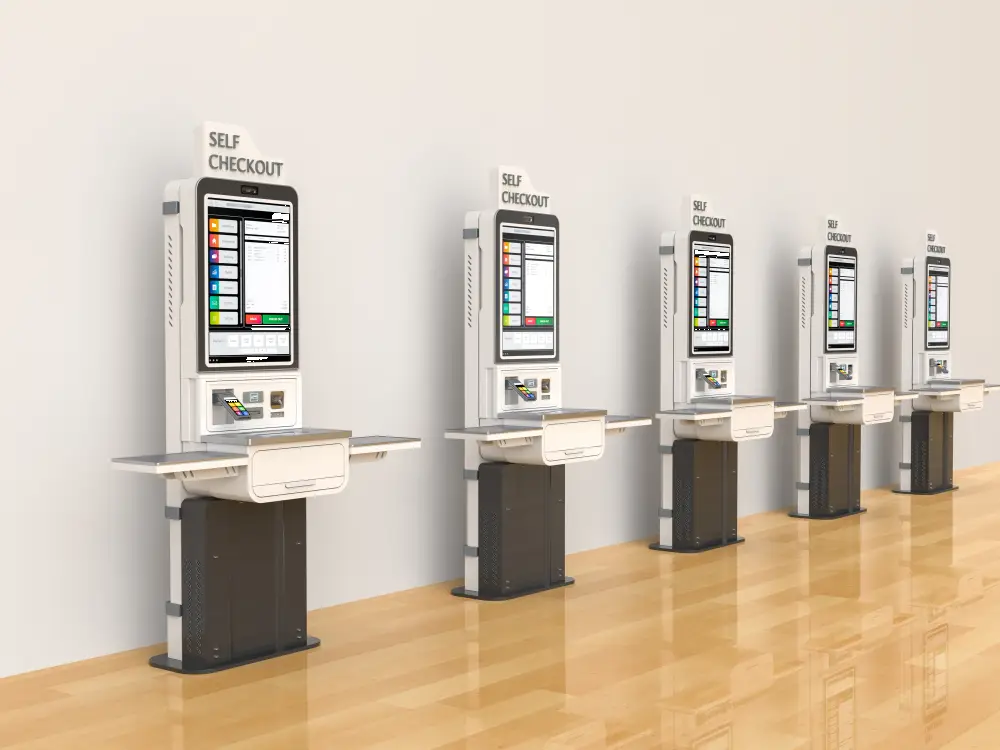Touchscreen Technology: In the modern retail landscape, customer expectations are higher than ever. Shoppers are looking for quick, convenient, and efficient experiences that allow them to complete tasks on their own terms. One technology that has dramatically transformed retail environments to meet these demands is touchscreen solutions. By integrating touchscreens into retail kiosks, stores can enhance the shopping experience, streamline processes, and reduce wait times. This blog will explore how touchscreen solutions are transforming retail kiosks and the various benefits they bring to both customers and retailers.




Improved Customer Experience
Touchscreen kiosks offer a unique self-service experience that puts control in the hands of the customer. Instead of waiting in line or searching for assistance, shoppers can use touchscreen kiosks to find product information, check stock availability, and even complete purchases independently. This independence empowers customers and contributes to a smoother, more enjoyable shopping experience. For example, in electronics stores, touchscreen kiosks can allow customers to search for specific products, read reviews, and compare models. This enables customers to make more informed decisions without needing to ask an associate for help, which is particularly helpful during peak hours when staff might be occupied.Faster and More Efficient Transactions
In fast-paced retail environments, efficiency is key. Touchscreen solutions allow customers to complete transactions swiftly, making self-service kiosks a great alternative to traditional checkout counters. Shoppers can add items to their cart, apply discounts, and process payments—all through the touch of a screen. This speed is particularly advantageous during busy periods, such as holiday seasons or sales events, when long lines can lead to customer dissatisfaction. With touchscreen kiosks, retailers can reduce wait times, process more transactions, and ensure that customers can shop on their own schedule without frustration.Reduced Operational Costs
Incorporating self-service touchscreens in retail settings can lead to significant cost savings. By automating routine tasks such as order placement, customer inquiries, and checkout, retailers can operate more efficiently. Fewer employees are needed for these basic functions, allowing the store to allocate human resources to areas that require personal interaction, such as customer service or advisory roles. For instance, grocery stores often use touchscreen self-checkout kiosks that let customers scan, bag, and pay for items independently. This setup allows stores to operate with fewer cashiers, lowering labor costs while maintaining customer satisfaction. The initial investment in touchscreen technology can pay off through long-term savings in operational expenses.Enhanced Product Exploration and Personalization
Touchscreen kiosks enable customers to explore products in-depth, offering an experience that mirrors online shopping but with the added benefit of immediate, physical access to products. Retailers can use touchscreens to display product descriptions, images, specifications, and even recommendations for related products. For example, a clothing retailer could use touchscreens to allow customers to browse through different color options, sizes, and styles. With additional features like virtual try-ons or style recommendations, customers receive a more personalized shopping experience, which can lead to increased satisfaction and higher conversion rates.Data Collection and Customer Insights
One of the most valuable benefits of touchscreen technology in retail is their ability to collect data on customer preferences and behavior. By tracking customer interactions, retailers can gather insights into which products are popular, what questions customers frequently ask, and which features they find most useful. This data can be used to tailor marketing strategies, adjust inventory based on popular items, and improve the overall customer experience. For example, if a touchscreen kiosk shows that customers frequently search for specific brands or product categories, the retailer can optimize stock levels to meet this demand, ultimately improving sales performance.Flexibility and Easy Updates
Touchscreen kiosks provide retailers with the flexibility to quickly update content. Unlike printed materials, which require time and expense to replace, touchscreen kiosks can be updated digitally in real-time. Retailers can change pricing, showcase new products, highlight promotions, or adjust seasonal content instantly. For instance, a cosmetics store could use a touchscreen kiosk to promote a “buy one, get one free” offer on specific items. When the promotion ends, the content on the screen can be updated without any additional costs. This flexibility helps retailers keep their messaging fresh and relevant to current campaigns.Enhanced Security and Reduced Theft
Touchscreen kiosks can also enhance security within retail stores. By managing self-checkout and product information through secure touchscreens, retailers can reduce theft and ensure accurate transaction records. Many kiosks have integrated security features like cameras or item weight verification systems, helping to prevent theft and ensure items are scanned correctly.
Conclusion
Incorporating touchscreen technology in retail kiosks offers numerous advantages, from improving the customer experience and speeding up transactions to reducing operational costs and enhancing product exploration. As retail environments become more focused on convenience and efficiency, touchscreen kiosks are proving to be an essential tool in delivering a modern and engaging shopping experience. For retailers looking to meet customer expectations and drive sales, investing in touchscreen technology is a forward-thinking solution that can significantly enhance the in-store experience.






